
中国病毒学(英文版)(Virologica Sinica)(原:病毒学杂志(英文)) 知网目次维普目次
- CSCD
- 科核
- 主管单位:
中国科学院
- 主办单位:
中国科学院武汉病毒研究所,中国微生物学会
- 国际刊号:
1674-0769;EISSN1995-820X
- 国内刊号:
42-1760/Q
- 学科分类:
- 字数:
6000-28000
- 有无基金:
/有基金 100.0%
- 周期:
CN外文-双月刊
- 特殊属性:
第一批认定学术期刊,外文期刊
- 电话:
027-87199157;027-87199121(官网电话)
- 邮箱:
virologica@wh.iov.cn(官网邮箱)
- 复合因子:
1.286
- 综合因子:
0.934
- 收录:
知网目次,维普目次
- 级别:
CSCD,科核
期刊简介
《中国病毒学》期刊已被查看: 次
更新频次
单位占比
一作占比
/有基金-100.0%投稿指南
1、投稿方式:在线投稿。
2、刊内网址:http://www.virosin.org/(202402期)
3、投稿系统:
http://mc03.manuscriptcentral.com/vs
4、期刊相关网址:
https://www.keaipublishing.com/en/journals/virologica-sinica/
https://www.sciencedirect.com/journal/virologica-sinica
5、官网邮箱:virologica@wh.iov.cn(编辑部)
(更多编辑邮箱请查看期刊官网)
6、官网电话:027-87199157;027-87199121
6、出刊日期:双月刊,逢双月出版。
2024年5月14日星期二
作者指南【官网信息】
https://www.virosin.org/news/zuozhezhinan.htm
《中国病毒学(英文)》投稿须知(供参考)
【2020年06期信息】
INSTRUCTIONS FOR AUTHORS
● TYPES OF ARTICLES
1. Research articles
Research articles belong to the full length article type, and should include elements as follows: title, running title, and byline; correspondent footnote; abstract and keywords; introduction; materials and methods; results; discussion; acknowledgements; compliance; author contributions; references; figure legends and figures/tables. The article length generally should not exceed 6,000 words, and detailed requirements are in the Format section.
2. Review articles
Review articles are summaries of important developments in virology research. They must be based on published articles and may address any subject within the scope of the journal. Reviews must have abstracts and keywords, and the body may have section headings and/ or paragraph lead-ins. The article length can be 4,000 words and more.
3. Letters
Letters are intended for the presentation of brief observations and published in a short-form format. The text should not exceed 1,500 words (exclusive of references); the number of figures and tables should be kept into one, while references are limited to 15.
4. Commentaries
Articles of commentaries are communications concerning topics relevant to the readership of Virologica Sinica and may include Editorials, Perspectives, News & Views, Meeting reports and Recollections. The article length may vary depending on article types.
● FORMATS OF ARTICLES
The manuscript should be double-spaced throughout using 15px Times New Roman. Number all pages. Research articles should begin with section of title page, and followed by abstract, keywords, introduction, materials and methods, results, discussion, acknowledgements, compliance, author contributions, references, figure legends and figures/ tables. Gene symbols and virus species should be italicized; protein products are not italicized. Non-standard abbreviations should be defined when first used in the text.
1. Title page:
The title page should include: Full title (a brief declarative statement of the major findings of the research), Running title (no more than 60 characters including spaces), each author’s affiliation and corresponding author’s contact information (Phone, Fax and Email).
2. Abstract:
The abstract should briefly (no more than 250 words) describe in complete sentences the scope of the investigation, the results obtained and the major conclusions, and 3-7 keywords should be given after the abstract. There is no Abstract, no sections on Introduction, Methods, Results or Discussion in “Letter type” publications.
3. Introduction:
The introduction should begin with a brief introduction of the background related to the research and should be as concise as possible.
4. Materials and Methods:
The materials and methods should be described clearly and referenced in sufficient detail. For commonly used materials and methods (e.g., media and protein concentration determinations), a simple reference is sufficient.
5. Results:
The results should present the experimental data in tables and figures with suitable descriptions. Present the results as concisely as possible in one of the following: text, table(s), or figure(s). Number figures and tables in numerical order like 1, 2, 3, etc., and be sure to cite all figures and tables.
6. Discussion:
The discussion should focus on the interpretation and significance of the findings with concise objective comments. It should not contain extensive repetition of the Results section or reiteration of the introduction.
7. Acknowledgments:
The acknowledgements should include people who contributed to the work but do not fit the criteria for authors and financial supports along with the numbers of grants.
8. Compliance:
In order to comply with the ethical requirements of the journal, the following statements must be included in a separate section entitled “Compliance with Ethics Guidelines”. For studies with animal subjects, please include: All institutional and national guidelines for the care and use of laboratory animals were followed.
For studies with human subjects, please include:
Additional informed consent was obtained from all patients for which identifying information is included in this article.
For articles do not contain any human or animal studies, please include:
This article does not contain any studies with human or animal subjects performed by any of the authors.
Besides, the author(s) should declare whether he (she) has competing interest in this section.
9. Author contributions:
According to ICMJE guidelines, authorship should be based on the following four criteria: 1) Substantial contributions to the conception or design of the work; or the acquisition, analysis, or interpretation of data for the work; and 2) Drafting the work or revising it critically for important intellectual content; and 3) Final approval of the version to be published; and 4) Agreement to be accountable for all aspects of the work in ensuring that questions related to the accuracy or integrity of any part of the work are appropriately investigated and resolved. Other contributors who do not meet the four criteria for authorship should be listed in the acknowledgements section.
10. References:
The citations for Virologica Sinica in the article body are adhered to author-year system.
Reference list are ordered alphabetically as the first author’s family name. References listed in the References section should include only publications that are published or in press. PhD thesis cannot be cited as references. The Endnote style of Virologica Sinica can be downloaded from www.virosin.org, or send to you via email upon request.
An example of reference style:
Tian YJ, Ou JH (2015) Genetic and epigenetic alterations in hepatitis B virus-associated hepatocellular carcinoma. Virol Sin 30:85–91.
The reference information appears as (Tian et al, 2015) in the article body.
11. Illustrations and tables
Figures and images should be labeled sequentially, numbered and cited in the text. Figures should be submitted separately, and referred in the text of the paper. Acceptable formats for figures are: TIFF, AI, EPS, PSD and JPEG. Pixel requirements are:
a) 300 dpi for grayscale and color; b) 600 dpi for combination art (lettering and images); c) 1,200 dpi for line art.
Figure legends should appear on a separate manuscript page after the Reference section, with a title of “Titles and legends to figures”.
Detailed experimental methods should not appear in figure legends.
Define all symbols used in the figure and define all abbreviations that are not used in the text. Use scale markers in the image for electron micrographs, and indicate the type of stain used. Line chart should express the data clearly and precisely. X and Y axises should be accurately and briefly marked and error bar should be provided if necessary.
The accepted format for regular tables is Microsoft Word/Excel. Each table should be typed at the end of the references, numbered and titled, and cited in the text. The headings should be sufficiently clear, and explanatory footnotes for abbreviations are necessary.
Please do not submit copyrighted figures or tables. If so, authors are responsible for acquiring reuse permission.
12. Nomenclature and abbreviations
Names used for viruses should be those approved by the International Committee on Taxonomy of Viruses (ICTV) and reported on the ICTV Virus Taxonomy website. In addition, the standard usage of virus specie names should follow recommendations of the ICTV: when the entire species is discussed as a taxonomic entity, the species name, as with other taxa, is italic and has the first letter and any proper nouns capitalized (e.g., Tobacco mosaic virus). When the behavior or manipulation of individual viruses is discussed, the vernacular (e.g., tobacco mosaic virus) should be used. Genes, mutations, genotypes, and alleles should be italicized while proteins should be set in roman type. The virus name and abbreviations not so conventional (like PCR, DNA, ATP) must be written out in full, both in the title of the manuscript and at the first mention in the manuscript; after that, abbreviations mentioned may be used.
● HOW TO SUBMIT A MANUSCRIPT
Authors are encouraged to submit their manuscripts via online submission at http://mc03.manuscriptcentral.com/vs. Files should be uploaded individually, and are automatically combined into a single PDF file by the submission system. The original submission should be deleted when submitting a revision because the original one has been automatically saved in the system.
If you have problems with the online submission, please contact editorial office at virologica@wh.iov.cn. Phone: 86-27-87199157.
上一篇:刑事技术下一篇:贵州大学学报(自然科学版)
《中国病毒学》同类基础医学期刊
-
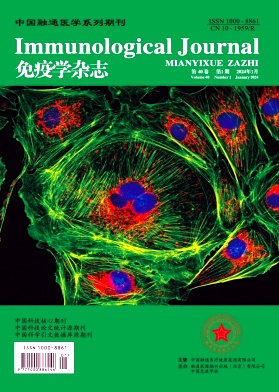
免疫学杂志
CSCD,科核,武A-
CN中文-月刊影响因子1.763
-
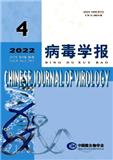
病毒学报
北核,CSCD,科核,武A-
CN中文-双月刊影响因子1.439
-
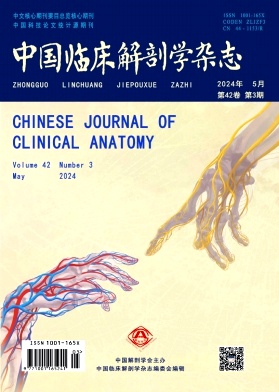
中国临床解剖学杂志
北核,科核,CSCD扩,武B+
CN中文-双月刊影响因子0.831
-
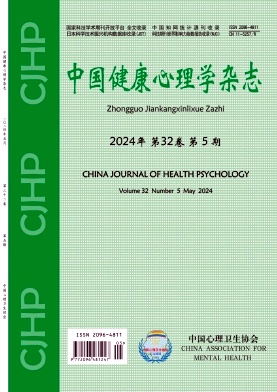
中国健康心理学杂志
CACJ-核心,武B+
CN中文-月刊影响因子2.05
-

中国生物医学工程学报
北核,CSCD,科核,武A
CN中文-双月刊影响因子1.392
-
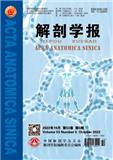
解剖学报
CSCD,科核,武B+
CN中文-双月刊影响因子0.931
-
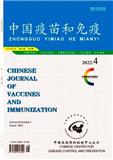
中国疫苗和免疫
北核,CSCD,科核,高T2,武B+
CN中文-双月刊影响因子2.521
-
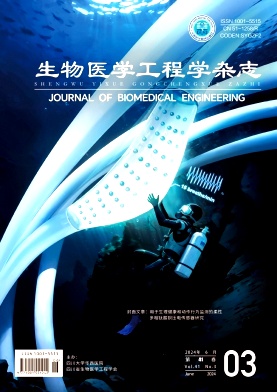
生物医学工程学杂志
北核,科核,武A,EI(中国2024)
CN中文-双月刊影响因子1.641
常见问题
-
中国病毒学杂志社官网、联系方式是什么?
中国病毒学杂志社官网:http://www.virosin.org/
投稿网址:http://mc03.manuscriptcentral.com/vs联系电话:027-87199157;027-87199121(官网电话)
投稿邮箱:virologica@wh.iov.cn(官网邮箱) -
中国病毒学杂志是核心期刊么?
中国病毒学是核心期刊,级别是:CSCD,科核, 是:基础医学分类下的知网目次,维普目次收录的期刊。
-
请问你们是中国病毒学杂志社吗?
我们不是《中国病毒学》杂志社。本站主要从事期刊信息展示与期刊推荐,不是任何杂志官网,直投稿件请联系杂志社。本站仅提供免费的学术指导、论文辅导、期刊投稿信息整理收集服务。
-
你们指导服务后可以保证文章被发表吗?
期刊发表的成功与否,主要取决于文章内容的质量。编辑老师会根据研究领域、创新性等多因素进行考量。我们会帮助您理解期刊的发表要求,助力提升发表几率,从而增加发表的机会。
-
晋级论文能否在报纸上发表?
在学术界,论文的发表往往被视为研究者职业发展的重要一环。晋级论文,即为了获得更高职称或学术地位而撰写的学术论文,通常需在专业期刊上发表。然而,许多人可能会问
